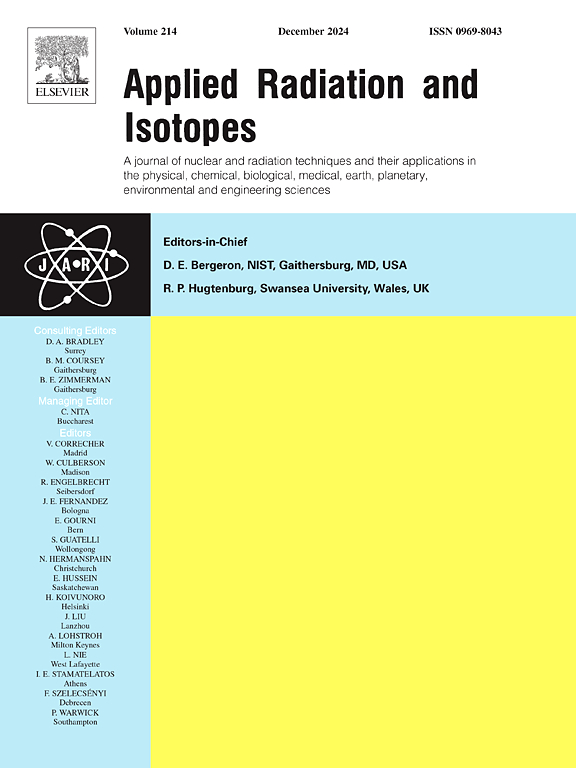Assessment of organ dose for adult undergoing CT examinations: Comparison of three software applications using Monte Carlo simulation
IF 1.6
3区 工程技术
Q3 CHEMISTRY, INORGANIC & NUCLEAR
引用次数: 0
Abstract
Understanding organ dose during CT scans is crucial due to cancer risks from low-level radiation exposure. This study aims to analyze and compare different methods for estimating CT organ doses in adult male and female patients, assessing the compatibility of NCICT with standard phantoms and NCICT with body size adjustment with GEANT4 simulations. It also evaluates the impact of different CT manufacturers on organ dose calculations. Previous research used various phantoms to represent organ doses across age groups. This study utilizes DICOM images from real adult patients undergoing CT scans to evaluate organ dose using the GEANT4 simulation toolkit. A retrospective analysis of 240 CT scans (head, chest, and abdomen-pelvis) compared GEANT4 dose estimates to the software tool NCICT. Data from Siemens and Philips CT scanners were included. Organ doses for 34 organs were calculated using Siemens patient DICOM data, while Philips estimates made using only NCICT with body size adjustment. Statistical analysis assessed differences in organ doses by gender and scanner type. Organ doses for the brain, spinal cord, and liver were higher in females (48.1, 4.9, and 6.7 mGy) compared to males (42.5, 4.4, and 6.3 mGy). NCICT with body size adjustment estimates were more consistent with GEANT4 (differences up to 18%) compared to NCICT with standard phantoms (differences up to 46%). Notable variations were found between Siemens and Philips scanners, despite identical detector rows. Accurate models and scanner-specific differences are critical for reliable radiation dose assessments, emphasizing the need for tailored dosimetry to enhance patient safety.
求助全文
约1分钟内获得全文
求助全文
来源期刊

Applied Radiation and Isotopes
工程技术-核科学技术
CiteScore
3.00
自引率
12.50%
发文量
406
审稿时长
13.5 months
期刊介绍:
Applied Radiation and Isotopes provides a high quality medium for the publication of substantial, original and scientific and technological papers on the development and peaceful application of nuclear, radiation and radionuclide techniques in chemistry, physics, biochemistry, biology, medicine, security, engineering and in the earth, planetary and environmental sciences, all including dosimetry. Nuclear techniques are defined in the broadest sense and both experimental and theoretical papers are welcome. They include the development and use of α- and β-particles, X-rays and γ-rays, neutrons and other nuclear particles and radiations from all sources, including radionuclides, synchrotron sources, cyclotrons and reactors and from the natural environment.
The journal aims to publish papers with significance to an international audience, containing substantial novelty and scientific impact. The Editors reserve the rights to reject, with or without external review, papers that do not meet these criteria.
Papers dealing with radiation processing, i.e., where radiation is used to bring about a biological, chemical or physical change in a material, should be directed to our sister journal Radiation Physics and Chemistry.
 求助内容:
求助内容: 应助结果提醒方式:
应助结果提醒方式:


